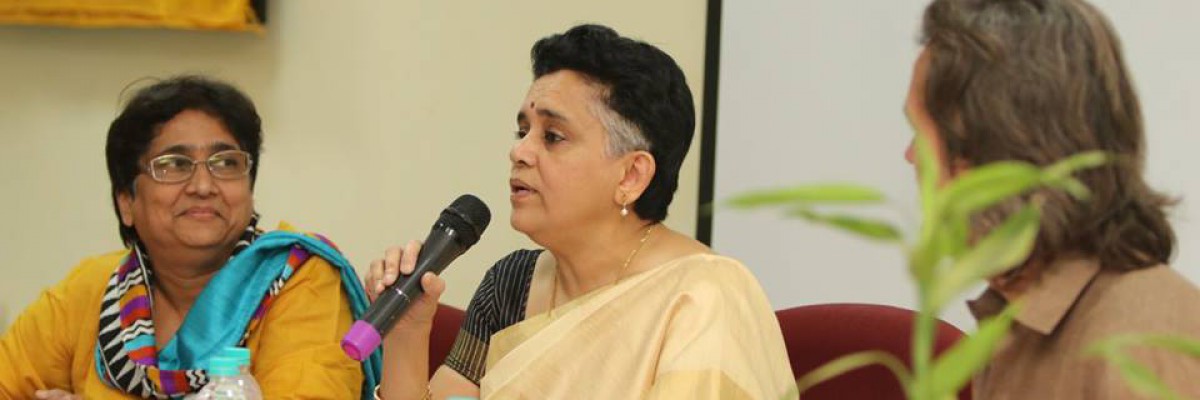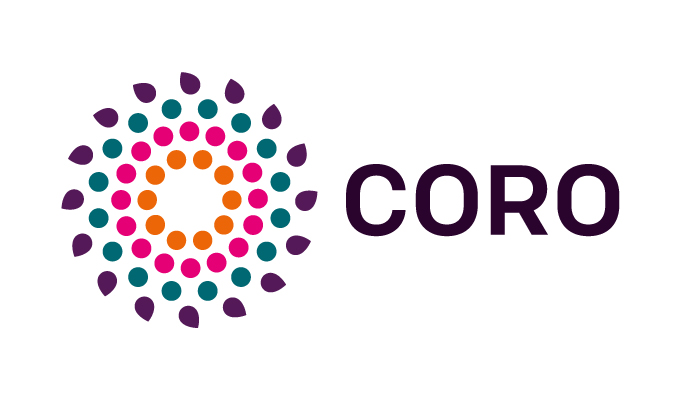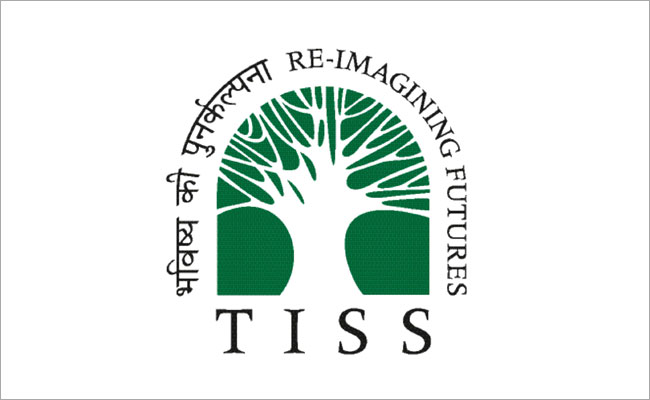
Session 3: Exploring Diverse Voices and Forms of Knowledge Creation
This session investigated the importance of alternative, non-mainstream mediums and indigenous cultural and linguistic forms for creating and transmitting knowledge. We engage with representatives from the cultural arts and humanities (such as traditional dance forms, community radio, rural journalism, and theatre) to understand how they can change mindsets which can go on to change not only society but also change politics and rights.
Presenters:
- Veena Singh, Dhritiman Das & Geetali Nayak (UNICEF Assam)
- Rajendra Negi (Henvalvani Community Radio)
- Samyukta Shastri (People’s Archive of Rural India)
- Apeksha Vora & Aiman Khan (Nirantar Trust)
Discussant:
Dr. Rama Mani (Theatre of Transformation)
“Community led Change embedded in cultural expressions: A unique initiative from Assam, India.”
Veena Singh, Dhritiman Das & Geetali Nayak, UNICEF Assam
An initiative by UNICEF, piloted in Sivasagar-District wherein, adolescents are empowered as ‘Change-agents’ in community to address multiple deprivations. It aimed at mitigating issues among adolescents: 32.6% adolescent marriages, 13.6% adolescent pregnancies, 40.8% underweight girls, 55.2% girls not practicing correct menstrual hygiene and 15.7% school drop-outs among girls.
Assam has rich cultural-diversity with every community having-its-own traditional folk-art form. Assamese, Tea Tribes(17%), Mishing(ST,17.8%) were the focused communities for this intervention. Their distinct folk-art forms were mapped and key messages were interspersed within their folk-form to mitigate deprivations.
A population of 53,699 (Adolescents=34,904) was reached through 186 live shows performed by 40 groups/786 trained adolescents. Initiated in 2016, it would be nascent to gauge its impact. Currently, the initiative has reached 12% of total-population and 39.3% of total estimated adolescent population in targeted-blocks. Data collected from Local Civil Society Organizations point out that about 17% of Child Protection cases (identified/resolved) had been exposed to edutainment based folk performances by adolescents. Various anecdotal evidences of transformative changes happening in the lives of adolescents through this platform have been qualitatively documented. There is a significant ripple effect, community ownership and visible path to sustainability of the initiative.
It is envisaged that the community led initiative would complement efforts of existing government machinery, leading to system strengthening and subsequently social change
“The Henvalvani Success Story”
Rajendra Negi, Henvalvani Community Radio
The roots of Henvalvani Community Radio, Chamba, were laid in September 2001 when a group of young rural youth came together in an attempt to find a distinct voice of their own. The Himalaya Trust, an NGO based in Dehradun conducted a radio training with the group, teaching them basics of recordings, specially focused on highlighting the needs of their local communities. For the groups members, making topical programs and airing them back in the hill villages in their vicinity was a first step towards an information revolution, and they have never looked back since.
Since its inception, Henvalvani has worked on various kinds of programs, all contextual and community centric in nature like awareness campaigns, programs promoting local talents or documenting traditional practices, environmental history and people’s movements in the valley, health capsules, stories of migration to the cities and so on. In partnership with a local NGO of the area, ASTHA, Henvalvani has also organized community melas and youth programs, in an attempt to bring together diverse voices of the hills on one common platform.
“Telling the stories of 833 million rural Indians”
Samyukta Shastri, People’s Archive of Rural India (PARI)
A living archive of the world’s most complex countryside. Rural India is in many ways the most diverse part of the planet. Its 833 million people include distinct societies speaking well over 700 languages, some of them thousands of years old. The People’s Linguistic Survey of India tells us the country as a whole speaks some 780 languages and uses 86 different scripts. But in terms of provision for schooling up to Class 7, just 4 per cent of those 780 are covered. Most Indian languages are mainly spoken by people in rural India.
Much of what makes the countryside unique could be gone in 20-30 years. Without any systematic record, visual or oral, to educate us – let alone motivate us – to save this incredible diversity. We are losing worlds and voices within rural India of which future generations will know little or nothing. Even as the present one steadily sheds its own links with those worlds.
PARI is both a living journal and an archive. It will generate and host reporting on the countryside that is current and contemporary, while also creating a database of already published stories, reports, videos and audios from as many sources as we can. All of PARI’s own content comes under the Creative Commons and the site is free to access. And anyone can contribute to PARI.
“Using Theatre and Critical Reflection to Understand Young People”
Apeksha Vora & Aiman Khan, Nirantar Trust
In an action research project, theatre was used as a research methodology to work with young people. We collaborated with six field organizations based out of Uttar Pradesh, Madhya Pradesh, Delhi, and Rajasthan, to learn from different contexts and include voices of grassroots karyakartas and young people in making sense of structures of gender, sexuality, marriage, caste, class and religion. The project explored platforms of bringing embodied ways of knowing into conversations using theatre.
The project, ambitiously, aimed to facilitate processes of collective knowledge building and recognize all participants as co-researchers. Emphasis was on questioning existing forms and hierarchies of knowledge locating the body as a source of knowledge within these. Through different theatre techniques like embodied-walking, sculpting, image making, storytelling and role play we tried to facilitate conversations around subjectivity, epistemology, lenses of analyses etc. We used writing, interviews, and drawing as reflective practices to help share experiences and learning post-workshops. The karyakartas facilitated similar processes with their youth groups, to talk about issues relevant to their everyday lives.
Reflecting on one’s own experiences, and how we embody structures as researchers is integral to the process. We hoped to be more conscious of being “extractive” as researchers, and make ourselves vulnerable to bridge the gap and power hierarchies between the researcher and the ‘subject’. The research process also emphasizes on moving away from a didactic training mode and encourages a process of facilitation where it becomes important to listen, grapple, and understand.



